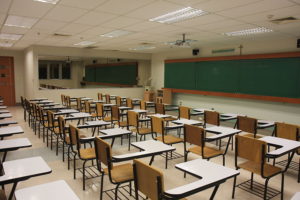Who’s Responsibility is it to Learn?
For most of us, the past two months have been filled to the brim with stress. Students have been testing away, on state and district mandated tests. Teachers are hurriedly trying to squeeze everything into the next few weeks. The end of the school year must certainly be approaching. Read More
The Community Forum on Standardized Testing
Last night I had the opportunity to participate in a Community Forum on “The Battle Over Standardized Testing” hosted by The Ledger. The forum was comprised of multiple education experts and parents.
Of particular importance Read More
More About Our Two Tiered School Systems
In yesterday’s Paedeia Podcast #8 (now on iTunes), Dr. Berney and I discussed what we consider one of the most troublesome trends in education today, the emergence of a two-tiered school system. In the podcast, we explained that until the 1990’s most public school students attended neighborhood schools. Certain schools served students in well-defined geographic areas. A student’s race, ethnicity, income, and level of academic achievement didn’t matter; if you lived in that area, your child could attend that pubic school.
Beginning in the 1990’s, however, this arrangement came under assault as states began to build charter and magnet schools. The impetus for magnets and charters was simple and appealing. Rather than bussing students to achieve racial integration, districts proposed that they would transform under-performing, low-income schools into specialized academies and high performing schools that parents would choose to have their children attend. In short order, we saw the rise of arts academies, science academies, technology academies, and elite academic academies that began to woo students away from neighborhood schools.
At the same time, states began to grant permission to individuals as well as private companies to build charter schools. Initially, charter schools were intended to provide services to students who were unserved or underserved because public schools simply lacked the resources to meet their needs.
While these two options seemed sensible, there are three unintended consequences. First, there are not enough places in the magnet and charter schools for all who want to enroll. To solve this problem, school districts use lotteries to select some but not all applicants. In other words, in the wealthiest country on earth, the promise of a high quality education depends on having your name drawn from a hat. That is to say, we are going to build attractive, high quality schools, but not all students will be able to attend them. Where do these demoralized students go? To their neighborhood school.
Second, because most charter and magnet schools have waiting lists, they do not have to keep students who cannot manage the curriculum or who are unable to follow the rules. Rather than a selective admissions policy, magnet and charter schools have a selective retention policy. They keep the students who succeed and they weed out those who don’t. Where to these students go? To their neighborhood school.
Third, because magnet and charters have the luxury of removing underachieving students, the students who remain produce higher tests scores. Higher test scores result in higher school grades, which, in turn, lead to more money from the state. And where do the underachievers go? To their neighborhood school.
So, what is happening is that the high achieving, motived students are filling up ever-increasing numbers of magnet and charter schools that get to retain the highest achievers and “counsel out” the underachievers. Students who cannot attend these schools return to their neighborhood schools. This is what we mean by a two-tiered school system.
You might ask how did this happen? Whose idea was it to create two school systems? Well, I received a post yesterday from our wonderful colleague, Diane Ravitch, in which she cites a column published in the February 13 edition of the Tampa Bay Times. The column, written by John Romano, provides an excellent explanation of how the two-tiered system started and what is keeping it going. I encourage you to read his column, http://www.tampabay.com/news/education/k12/romano-the-topsy-turvy-tale-of-charter-schools-and-whom-they-really-serve/2265292.
After reading it, tell us what you think and then tune in to our next Paedeia podcast on Sunday, February 21 where we once again discuss this critically important issue. And remember, it is budget time in Tallahassee.
